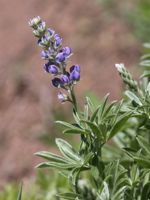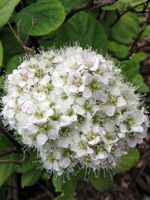Mon-Fri 9am - 5pm Mountain time
Birch Leaf Spirea vs Silky Lupine
Lupinus sericeus
Spiraea betulifolia
CUSTOM GROW
NOT AVAILABLE THIS SEASON - MIGHT RETURN
Silky Lupine is a native perennial wildflower known for its upright spikes of blue to violet flowers. Blooming from late spring into summer, the nectar-rich, showy blossoms attract a variety of pollinators, especially bees and butterflies. The plant’s fine, silky foliage provides soft texture and visual interest, enhancing landscapes throughout the growing season.
Silky Lupine is a nitrogen-fixing plant that enriches soils and supports surrounding vegetation. Its deep roots stabilize soil, and it spreads naturally by ejecting seeds from drying pods. If spread isn’t desired, new seedlings are easy to remove. While it is foraged by some wild animals, it contains alkaloids that are toxic to livestock. Silky Lupine is well-suited to pollinator gardens, naturalization plantings, erosion control, and ecological restoration projects.
Birch Leaf Meadowsweet is a small, rounded shrub, reaching 3 to 4 feet high.
In the early summer, white flowers emerge with dark green foliage. Come fall, birch-like leaves turn a kaleidoscope of red, orange, and purple adding seasonal interest.
Native to Japan and Eastern Asia, this dwarf shrub attracts butterflies and is an excellent option for the front row of a shrub border.
Silky Lupine Quick Facts
Birch Leaf Spirea Quick Facts
Toxicity: toxic to sheep and other livestock

